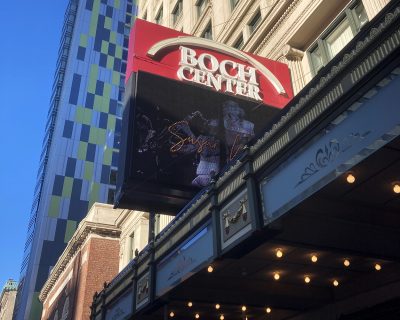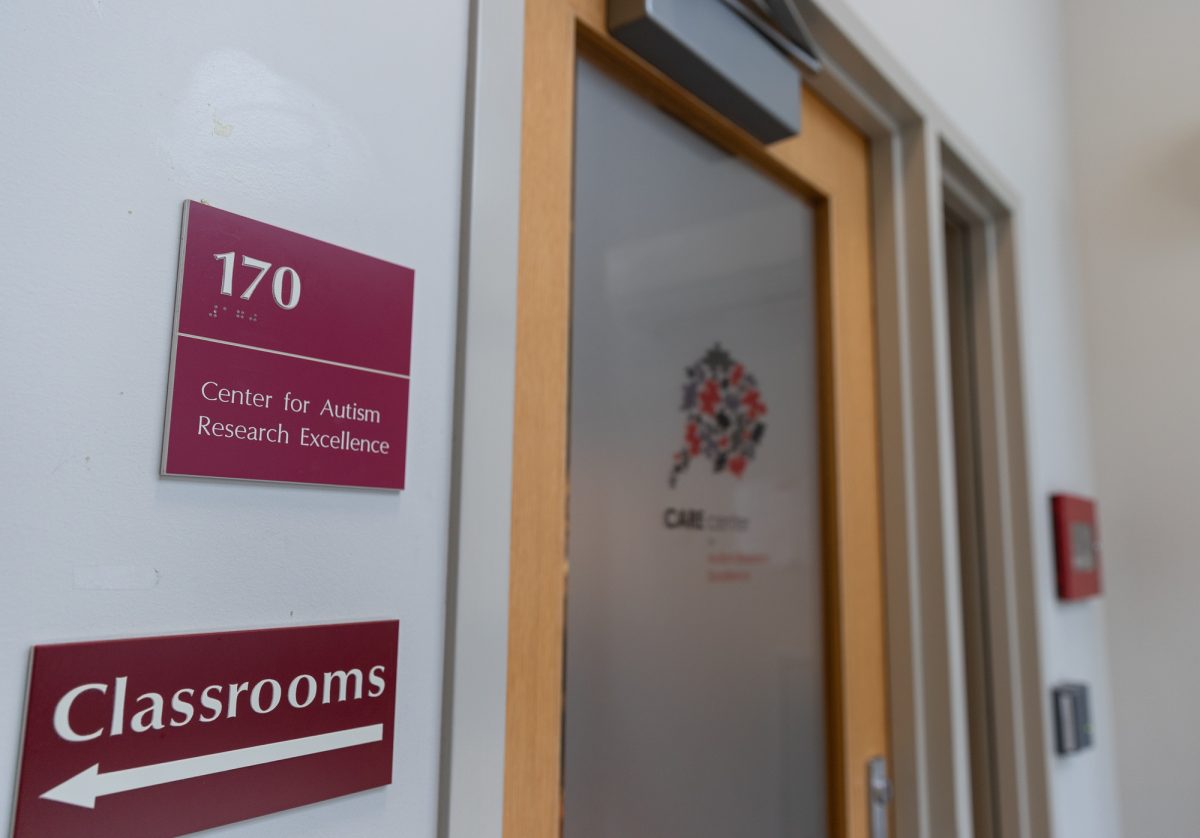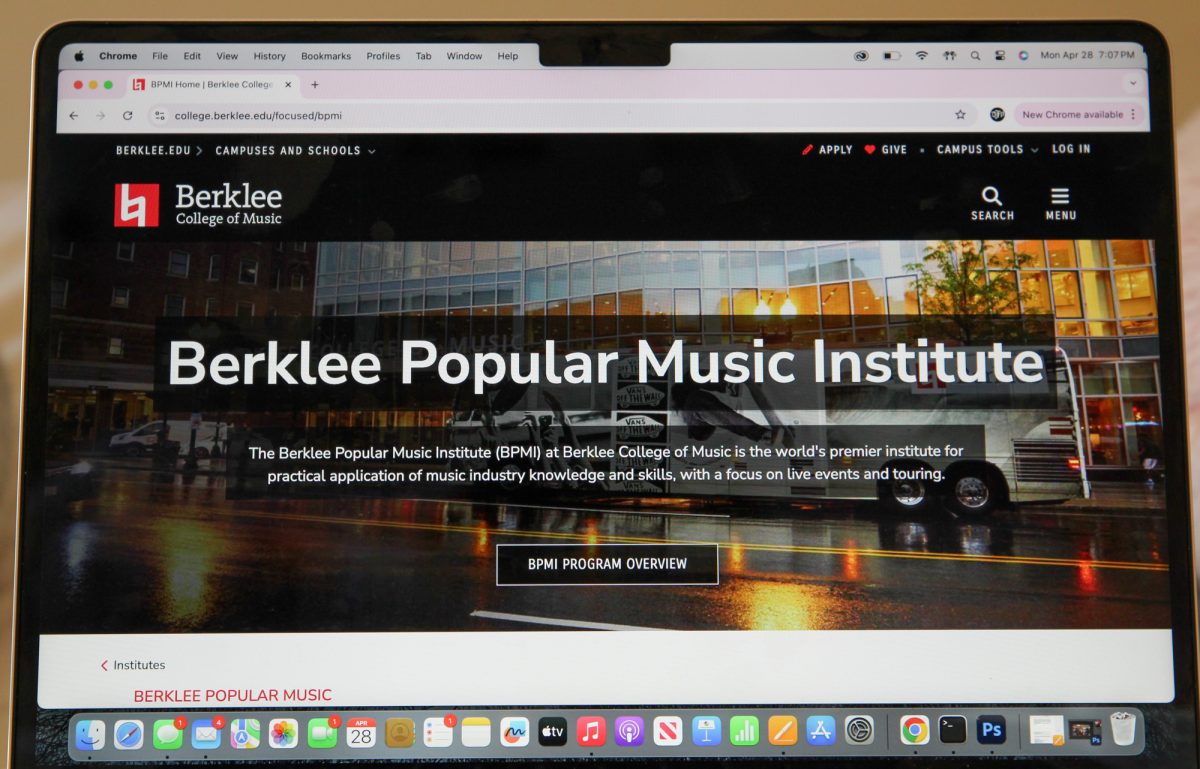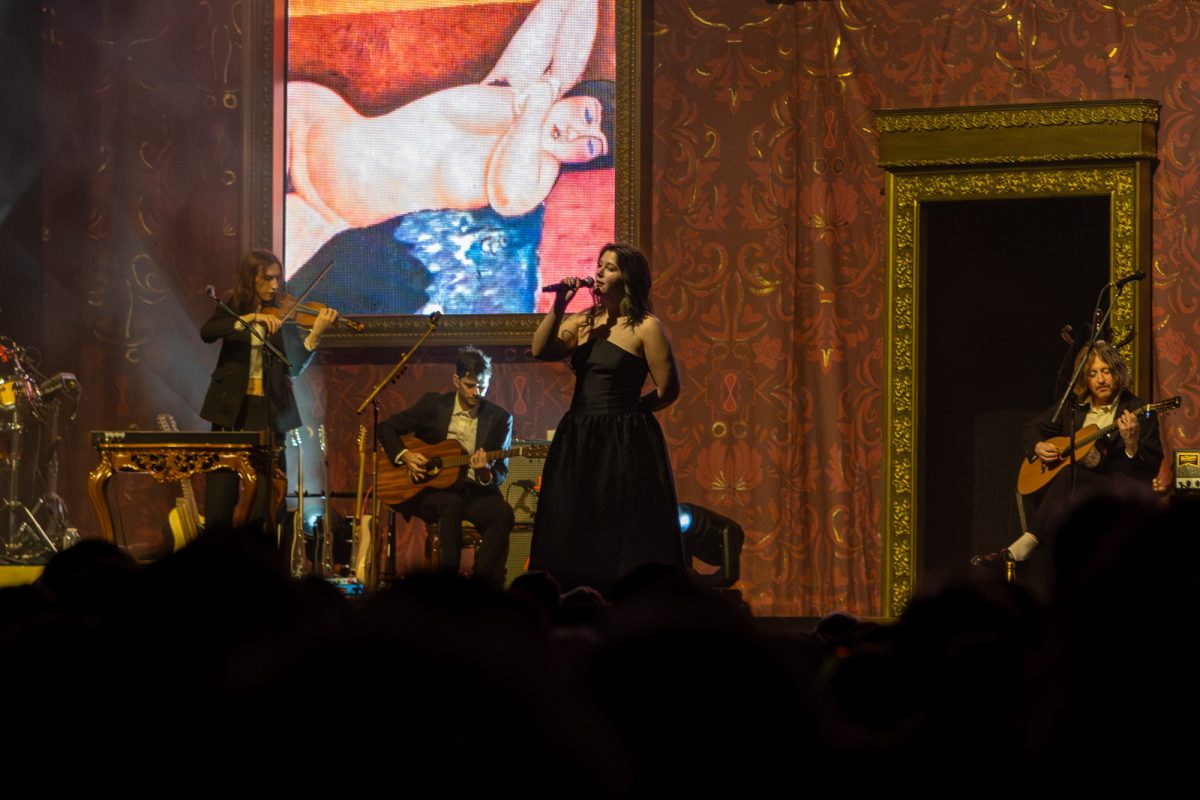On a nearly empty street deep in the heart of the Theater District in downtown Boston sat the Wang Theatre’s marquee displaying a series of images of legendary women musicians by local Cambridge photographer Susan Wilson.

The photos cycling on the digital marquee are a portal into a distant life, when concerts were a Friday night endeavour. The photos capture legends such as Tina Turner, Judy Collins and Joan Armatrading in action, performing in the Wang Theatre and other Boston and Cambridge venues.
The Boch Center — a “nonprofit innovator and guardian of iconic venues,” including the Wang Theatre — chose to highlight female artists in the “Women Who Rock” exhibit for Women’s History Month.
Wilsons said the photos span over three decades, starting in the late 1970s. Seeing them, she said, is like a trip back in time.
“It’s cool to walk by and it’s like ‘wow, well there you go,’” Wilson said. “It’s very exciting and it’s getting really good reception.”
Wilson, who is “technically retired,” said she first connected with the Boch Center in February of 2020 through one of the board members, Betsy Siggins. The Boch Center was looking for female photographers as well as pictures of women, she said, because the majority of people photographed were men and hardly any photographers were female.
Matthew Pacific, director of digital marketing at the Boch Center, said the exhibit was initially set to be in the lower lobby of the theater, but was transformed digitally because of the pandemic.
“Each of Susan’s pictures really tell a story,” he said. “I think they capture the true art of live performance.”
Pacific said those at the Boch Center believe it’s important for them to give artists visibility and keep audiences engaged, even without live performances.
“This exhibit is one of those ways where we hope people will see that, you know, hey, our lights may be off inside and we don’t have any performances, but we’re still here,” he said, “and don’t forget about us, because we’ll be coming back.”
Wilson said she had a long affiliation with Club Passim in Cambridge, where legends including Joan Baez and Bob Dylan “evolved and became important.” Here, not only did she get to capture the growing music scene, but she was able to personally know the performers.
“These guys were not just my photo subjects,” she said, “a lot of [them] were my buddies.”
The music scene surrounding Wilson in the late ’70s was in tandem with the women’s movement. She then became a photographer for prominent women’s newspapers The Equal Times and Sojourner Magazine as “women were really coming into their own in music.”
“There were women who were not just singing, or the girl groups that they used to have in the ’60s, but women were heading their own bands, writing their own songs, I guess marching to their own drums,” she said. “Everybody wanted to cover it, and I became the go-to person to do that.”
She soon became an “expert” on women in music, she said, and began to interview, photograph and review female artists for The Boston Globe and other publications.
The power of music has been ever-present in Wilson’s life, she said. Although her career is in photography and history, music has laid the foundation for her drive.
“It’s the soundtrack behind our lives,” Wilson said. “There have been musicians throughout my life who have just been inspirational, and they go to your heart.”
Music has always been in Wilson’s life. She said her mother was a classically trained pianist and her father was an avid jazz and blues fan.
“I don’t think it’s worth living without music. It’s essential,” she said. “If my part can be taking images that were, for many years, writing stories about musicians so that more people can discover how wonderful they are, well that’s just great.”
Wilson said when working for The Boston Globe in the 1980s, she wrote the first large feature about Tracy Chapman, who at the time were both students at Tufts University.
“Some people had tipped me off that this kid who was playing on the street in Harvard Square was someone you should check out playing on the little teeny clubs,” she said. “Then we became friends and she’s younger than me but she became kind of like my little sister.”
Because Wilson was a photographer, she helped Chapman in the preliminary phases of her career by taking publicity photos and writing her press packet. Chapman was only a student, so in return for Wilson’s service, she painted the walls of Wilson’s studio and waxed her car.
As someone who has seen the growth of women in the music industry during her photography career, Wilson said she is optimistic about where women stand moving forward.
“I’ve watched women in all fields, including music, go from largely the background to the foreground,” Wilson said. “I think that that’s still going to happen now.”
For now, Wilson’s photographs are hung outside the Wang Theatre as an ode to women in music and the influential women who have molded the field throughout the decades.
“There’s something electrifying, soothing, something that just brings us all sanity in live performance,” she said. “I look forward to the day when that comes back for women, men and everybody.”


























































































































